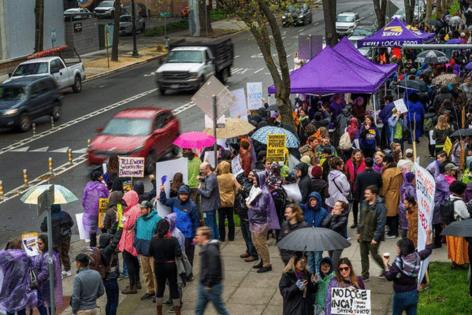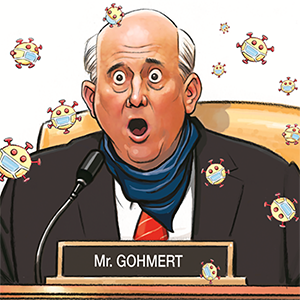California state workers claims on telework benefits backed by independent auditor
Published in News & Features
SACRAMENTO, Calif. — For those who have been following the telework debate in the California government, Tuesday’s report from the state auditor was a catharsis.
The audit — which estimated the state could save up to $225 million in building expenses if California embraced telework — affirmed concerns state employees and their labor representatives have vocalized since Gov. Gavin Newsom issued his first return-to-office order last year.
“The Governor has recently called for a more cost-effective and efficient state government. The audit finds that to serve those goals, he should look no further than flexible telework,” Professional Engineers in California Government Executive Director Ted Toppin said in a Tuesday statement.
Saving California taxpayers money while achieving other policy goals, such as cutting emissions and recruiting skilled state workers, “is the definition of cost-effective and efficient government,” Toppin said.
For many, including Assemblymember Josh Hoover, the audit didn’t offer surprises. Rather, it affirmed what the Folsom Republican and others have been arguing: One-size-fits-all telework policies aren’t right for California.
Hoover, who spearheaded the inquiry, said the auditor’s office told him that they gave the Governor’s Office ample time and opportunities to provide more information and reasoning as to why the return-to-office order was so important. But, Hoover said, the administration did not ultimately provide auditors with data to support their mandate.
“This audit was really important highlighting why the governor’s position on this is so problematic,” he said.
Two articles of evidence
The Governor’s Office disagreed with the auditor’s findings, including the estimated budget savings. The report doesn’t paint a complete picture of “the benefits of working in person,” Tara Gallegos, a spokesperson for the Governor’s Office, said in a statement.
Throughout the process, auditors requested data and information about the benefits of in-office work to support the Governor’s Office decision making. The administration supplied auditors with two articles.
One of those articles was published in 2017, prior to the pandemic’s reshaping of remote work policies.
One of the authors of the other report, Stanford Economics Professor Nicholas Bloom, said in an interview Tuesday that four days in the office aren’t necessary to achieve the benefits of in-person work that his report found.
Bloom said there’s no evidence that a specific number of days in office yields better collaboration or mentorship opportunities. And he noted that many Fortune 500 companies have settled on three days a week to keep employees happy.
The Governor’s Office has not stated why employees need to return to offices four days a week instead of three or two days, but some have speculated that Newsom is using this issue to give the administration more leverage when negotiating with bargaining units.
“We definitely saw it used as a bargaining chip in this last set of negotiations,” Hoover said. “Whether or not that was his plan all along, I really can’t say, but the fact that he kept this sort of looming threat on the table for 2026 I do think is very concerning.”
Savings estimates face barriers
The report affirmed Steven Boyd’s hunch that the governor lacked justification for the return-to-office order, and the significant costs associated with maintaining office buildings for state workers.
“I thought they were going to have something, and they had nothing,” Boyd, a trainer for professional development with the Employment Development Department, said in an interview Tuesday.
Boyd said he was frustrated over how much money the state spent on office space, much of which goes unfilled, while he and his fellow state workers have to navigate bureaucratic hurdles and red tape when making small purchases.
Roughly a third of the $765 million that the state spends annually on leased and owned properties could be used for renovating buildings and moving departments, the audit estimated.
Gallegos pointed out that the $225 million savings estimate cited in the audit relies on a set of assumptions that are “unlikely to occur.”
The auditors outlined barriers to offloading the unnecessary office space including the difficulty in identifying a new tenant, moving costs and lease terms.
The Governor’s Office said it would take the auditor’s recommendations into account when managing the state’s workforce moving forward. However, both Hoover and Boyd expressed concern the findings wouldn’t be enough to sway Newsom.
For unions representing state workers, the conversation over hybrid work isn’t over.
Toppin, with the state engineers union, concluded: “PECG looks forward to continuing to work with the Administration and all state government stakeholders to establish a long-term flexible telework policy that delivers cost-effective and efficient government while serving the needs of taxpayers, state departments, and state employees.”
____
©2025 The Sacramento Bee. Visit at sacbee.com. Distributed by Tribune Content Agency, LLC.







Comments